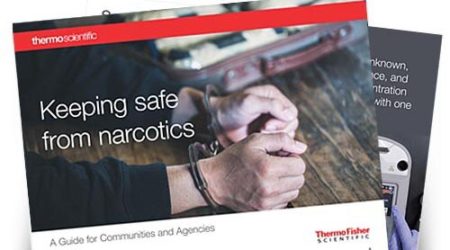Lead contamination has long been a problem in water systems, contributing to serious conditions such as kidney damage, nervous system disorders, and developmental delays in children. Clean, lead-free drinking water is thus essential to public health, and there’s been enormous regulatory effort to curb exposure. The Safe Drinking Water Act (SDWA) and its amendments (1986 and 2011) were landmark changes in prohibiting lead use in plumbing. However, many cities still rely on aging infrastructure containing lead pipes and fixtures. In 2024, new regulatory deadlines aim to address these ongoing concerns with stricter measures.
Understanding lead in water systems
Historically, lead was a staple material in water systems due to its durability and workability. Its toxic effects, however, were only well understood once modern research exposed the health risks associated with lead exposure. Lead was common in pipes, solder, and plumbing fixtures for decades, contributing to widespread contamination.
Regulatory milestones to reduce lead exposure
Regulations have been crucial in addressing lead contamination. The 1986 amendments to the SDWA mandated a significant reduction in lead use, limiting its presence in solder to 0.2% and in plumbing components like brass to 8%. Later, the 2011 Public Law 111-380 further reduced allowable lead content in brass to 0.25%, a massive step toward safer water infrastructure. Despite these efforts, many cities still need to replace outdated plumbing.
Many municipalities’ aging infrastructure still poses a significant health risk, as lead can leach into drinking water. Plus, replacing old lead-containing systems remains a costly and logistically complex problem.
Upcoming 2024 compliance date and the Lead and Copper Rule Revision (LCRR)
The U.S. Environmental Protection Agency (EPA) has significantly revised the Lead and Copper Rule, known as the LCRR, to safeguard public health. This updated rule strongly emphasizes transparency and inventory management of lead service lines.
What is the LCRR?
The LCRR requires water systems to develop, maintain, and update public inventories of lead service lines. This inventory must be accessible to the public and updated regularly to reflect the current state of infrastructure. The LCRR is part of a broader strategy to phase out lead from drinking water systems, ensuring safer water nationwide.
October 2024 deadline
The 2024 compliance deadline is a critical milestone. By that date, all U.S. water systems must submit a comprehensive inventory of lead service lines, which must be updated every 1-3 years, depending on the frequency of water quality testing.
Water utilities and municipalities face steep consequences for failing to meet this deadline, including potential fines and reputational damage. More importantly, missed deadlines could expose communities to ongoing public health risks.
The role of lead-free brass in ensuring compliance
As cities and municipalities work to replace lead service lines, lead-free brass is emerging as a key material for compliance. Lead-free brass is a safer alternative for plumbing components and is designed to meet strict SDWA guidelines.
What is lead-free brass?
Lead-free brass, as defined by the 2011 amendments, contains no more than 0.25% lead, making it a safer choice for drinking water applications. It is used in pipes, faucets, and other fixtures that come into contact with potable water.
Certification requirements for lead-free brass
As of September 2023, manufacturers must certify their products to comply with NSF/ANSI/CAN 372 standards for lead-free brass. This certification can be achieved through self-certification or third-party auditing. This accountability help ensures that all lead-free brass plumbing components meet the stringent lead content regulations.
Quality control in lead-free brass production
Maintaining strict quality control is essential in the production of lead-free brass. Handheld X-ray fluorescence (XRF) analyzers are commonly used to screen plumbing components and help ensure they comply with the 0.25% lead threshold. These analyzers offer a quick, non-destructive way to verify compliance, ensuring manufacturers consistently meet regulatory standards.
For manufacturers, ensuring that every batch of lead-free brass complies with these new regulations can be costly and time-consuming. Frequent testing and certification add to production overheads.
Tools for compliance and quality assurance
Technology is vital in helping manufacturers and municipalities comply with the LCRR. Handheld tools using X-ray fluorescence (XRF) spectroscopy are invaluable for ensuring the lead content in brass plumbing components stays below the mandated limits.
Technology aiding compliance
Handheld XRF analyzers provide a cost-effective, portable solution for quickly testing the lead content in plumbing materials. These tools allow manufacturers to maintain compliance without halting production, making them a cornerstone of modern lead-free brass testing. Other technologies, like Optical Emission Spectrometry (OES), also help screen materials and helps ensure compliance with the latest safety standards.
Water utilities and plumbing suppliers should consider integrating these technologies into their workflows to streamline compliance, avoid penalties, and helps ensure their infrastructure delivers safe, lead-free drinking water.
Preparing for beyond 2024
The October 2024 compliance deadline under the LCRR underscores the importance of transitioning to lead-free materials like brass. Water utilities, manufacturers, and municipalities must act now to help ensure their inventories are updated, their plumbing systems are lead-free, and they meet EPA standards. Lead-free brass and reliable testing tools, such as handheld XRF analyzers, will be critical in meeting these goals and ensuring safe drinking water.
Explore the latest lead-free brass testing technologies and the certification processes necessary to stay ahead of EPA regulations.


Leave a Reply